Tenebrism is a form of artistic expression that uses dramatic lighting, often to create a sense of darkness or gloom. It is an extension of the Italian word tenebrae, which means shadows.
The term was coined by the French playwright Jean-Baptiste Racine in 1667 as an attempt to describe a particular type of theatrical performance.
Soon after, painters and artists began to take up the term to describe a style that was dark and gloomy in tone, but still capable of portraying light and shadow in dramatic ways.
What Is tenebrism
What Is Tenebrism Art?
Tenebrism is a painting technique which involves the use of strong chiaroscuro effects, where there is a hard contrast between light and dark, usually achieved by painting in oil paint on a dark surface.
Tenebrism is often said to have been invented by Jusepe de Ribera (1591–1652), a Spanish painter active in Naples and Sicily, who used the technique to show dramatic religious scenes.
However, tenebrism was made popular in 16th-century Italy through the works of Caravaggio (1571–1610) and his followers.
Their influence was such that the Italian word “tenebroso” (“dark”) came to be virtually synonymous with “Caravaggesque”.
Tenebrism is a dramatic style of painting where stark contrasts between light and dark command the viewer’s attention.
It’s a technique that plunges the majority of the composition into shadow, illuminating only the key elements to create a powerful focus.

In this article, we’ll explore the origins and impact of tenebrism, and why it’s captivated art enthusiasts for centuries.

Join us as we uncover the masters of tenebrism and their timeless works that continue to influence the art world today.
Origins Of Tenebrism In Art
Tenebrism emerged as a pronounced style during the early 17th century, primarily within the Baroque period.

Its roots are often attributed to the desire for dramatic intensity and emotional resonance in visual storytelling.
As devoted followers of the evolution of artistic expression, we recognize that Caravaggio is the most renowned proponent of this style, with his bold use of chiaroscuro—a technique that plays on the stark contrasts between light and dark.
As his legendary works gained prominence, other artists began to experiment with tenebrism.
This includes painters across Europe like Jusepe de Ribera in Spain and Gerrit van Honthorst in the Netherlands.
We’ll jump into:
- The spread of tenebrism beyond Italy to other European regions,
- The significant artists who adopted and adapted this style.
The appeal of tenebrism extended beyond its aesthetic qualities.

Social and religious contexts played a fundamental role in its proliferation.
We’ve noted that in tumultuous times, stark contrasts in artwork can symbolize philosophical and moral dichotomies prevalent in society.

The Catholic Church also saw tenebrism as a potent tool for evoking spiritual fervor and piety among viewers, contributing to its spread.
Embracing the profound visual impact of tenebrism, artists continued to harness this style to evoke emotion and narrate stories with an unspoken depth.
They painted scenes that were visceral and raw, allowing the interplay of light and shadow to heighten the intensity of the subject matter.
Our exploration of the Baroque era and tenebrism reveals not just a stylistic choice but a lens through which the zeitgeist of the time is made palpable.
Characteristics Of Tenebrism
Tenebrism is defined by its dramatic use of chiaroscuro, the technique that manipulates the interplay between light and shadow.
This style is immediately recognizable due to:

- Deep, enveloping shadows,
- A single source of light that appears almost divine,
- Stark contrasts that sculpt figures and objects, lending them a three-dimensional quality,
- Strategic highlights that guide viewers’ eyes to focal points of the narrative.
Renowned paintings such as Caravaggio’s The Calling of Saint Matthew exhibit these characteristics, where the figures emerge from the shadows as if lit by a spotlight.

This spotlight effect creates an intense focal point, highlighting the main subjects while the background recedes into darkness.
The contrast in tenebrist paintings is not subtle – it’s bold and uncompromising.
Shadows are not just an absence of light; they become an assertive presence, creating a sense of volume and form.

The light, often cold and precise, doesn’t just illuminate; it seems to cut through the darkness, revealing moments of profound emotion or significance.
Artists adopting tenebrism often focused on religious or mythological scenes, using the stark contrasts to evoke spiritual experiences or moral introspection.
But the influence of tenebrism extended to other genres.
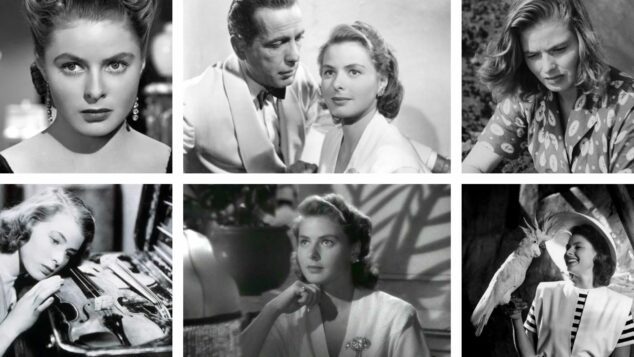
In Judith Beheading Holofernes, Artemisia Gentileschi uses tenebrism to amplify the drama and intensity of the scene, showcasing her mastery of the style and the emotive power it can convey.
We, as filmmakers, draw inspiration from these artistic techniques.

The use of light and shadow in tenebrism influences our approach to cinematography and visual storytelling.
By understanding how painters of the past manipulated light to create mood and focus, we enhance our ability to craft visually compelling narratives that resonate with audiences today.
The Masters Of Tenebrism
Tenebrism has been embodied by several renowned artists throughout the centuries, each bringing a distinct voice to this shadow-laden style.
These great masters have not only contributed iconic artworks but have also influenced generations of artists and filmmakers with their signature use of light and dark.
Caravaggio stands at the forefront, often regarded as the father of Tenebrism.
His dramatic lighting and realistic human figures carry a psychological intensity that’s palpable.
The Conversion of Saint Paul and The Supper at Emmaus are pivotal works illustrating his mastery over this style.
Following Caravaggio’s lead, other artists adopted and adapted the tenebrism approach:
- Jusepe de Ribera: His sharp chiaroscuro created a tangible sense of texture and depth.
- Georges de La Tour: Famed for nocturnal scenes illuminated by candlelight, capturing the quietude of night.
- Artemisia Gentileschi: Used tenebrism to empower her subjects, particularly in works like Judith Slaying Holofernes.
Each of these artists showcased the versatility of tenebrism – from capturing stillness to vivid action.
The legacy of tenebrism persists not only in paintings but has transcended into the realm of cinematography.
Our understanding of shadow play greatly benefits from these artistic contributions, enriching the visual narratives we craft in film today.
Modern cinematographers often draw parallels with these masters, learning how to sculpt scenes using shadows and lighting in similar ways.
The principles they applied in creating a focal point and drawing viewers into a scene remain just as relevant.
Our work behind the camera continues to be guided by these historical brushstrokes, making every frame a treasure trove of light and darkness.
Influence Of Tenebrism In Art History
Tenebrism, with its stark contrasts and profound drama, has left an indelible mark on the fabric of art history.
The technique birthed a visual vocabulary that artists across centuries have dipped into to evoke emotion and focus their narrative.

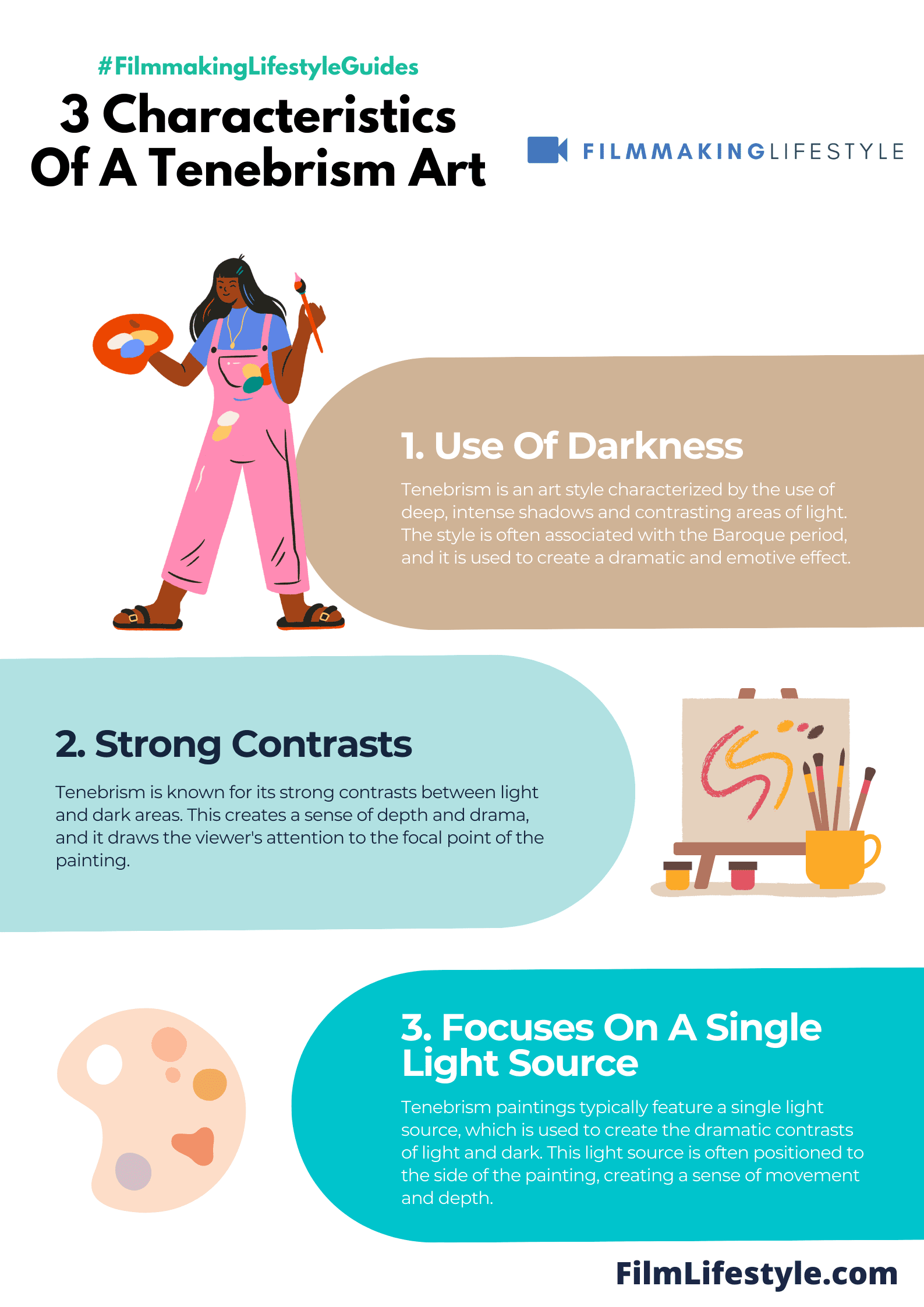
From the Baroque period, where it first took shape, to the Romantic era, tenebrism’s influence was – and still is – pervasive.
What began in painting extended far beyond the canvas.
Not only did tenebrism influence generations of painters, but it also reached into other realms:
- Sculpture, as artists like Bernini adopted the dramatic lighting effects to instill their works with a strong sense of movement and emotion,
- The printmaking industry, with the help of shadows and light, dramatically increased the depth and intensity of their imagery.
The profound impact of tenebrism also spilled over into literature and theatre.
Playwrights and authors have long used the techniques as a metaphorical tool, anchoring pivotal moments in shadow to underscore themes of conflict, mystery, or fate.
Hamlet and the works of Edgar Allan Poe, for instance, harness an almost tenebristic quality in their tales of the human condition.
Moving forward, in the world of contemporary art and filmmaking, tenebrism becomes a study in the manipulation of light and dark to guide viewers’ eyes and emotions.
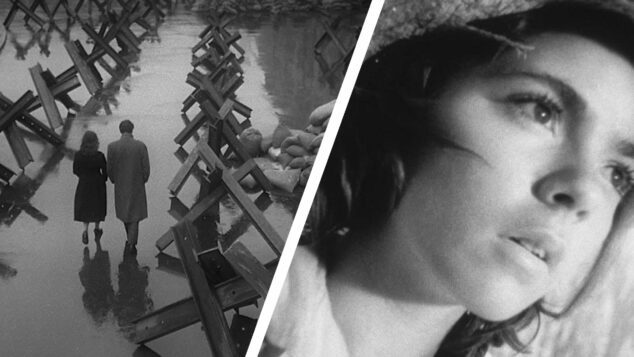
Our appreciation and applications of these ageless techniques are evidence of their lasting influence.
Through the lens of a camera, filmmakers draw direct inspiration from the tenebristic masters, creating atmospheric scenes similar to those classic canvases hung in galleries worldwide.
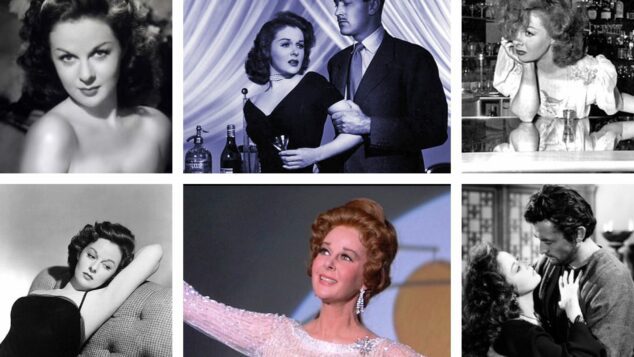
Masters like Caravaggio and Gentileschi set a precedent for emotional complexity within visual storytelling.
We’ve carried this legacy into our work, wielding tenebrism as a tool to breathe life and narrative weight into modern film.
It’s a testament to the power of this dramatic style that even after centuries, its principles remain at the core of visual artistry, continually reshaping our aesthetic and emotional landscapes.

Contemporary Artists Embracing Tenebrism
Tenebrism has not only persisted into contemporary art but continues to be a significant influence for many Modern Artists.
These creators explore the dramatic interplay of light and shadow to convey deep emotions and narratives.
We often find that their work echoes the intense contrast found in the paintings of Caravaggio and his followers, yet these artists bring new context and modern techniques to the table.

Today’s tenebrists harness the latest technology and mediums to advance this classic style into the digital age.
Artists such as Jenny Saville and Bill Henson use tenebristic techniques to create a sense of volume and depth that is both traditional and innovative.
- Jenny Saville’s large-scale oil paintings show how tenebrism can underscore the contours and fleshiness of the human body.
- In Bill Henson’s photographs, the manipulation of light and dark transforms everyday scenes into something profound and otherworldly.
In the realm of filmmaking, tenebrism is alive and influential as ever.

Directors and cinematographers employ high-contrast lighting to create mood and focus attention on certain elements within the frame.
They Use shadows to veil the unnecessary, directing the viewer’s gaze to what’s truly important – the subject.
Some notable films that employ tenebristic principles include The Godfather and Sin City, where the interplay of light and shadow becomes a storyteller in its own right.
- Movies like The Godfather use shadow to build tension and highlight the duality of their characters.
- The unique visual style of Sin City relies heavily on stark contrast, almost mimicking the chiaroscuro effects found in classic tenebristic paintings.
By adopting and adapting tenebrism, these artists and filmmakers have reaffirmed the movement’s relevance.
Tenebrism today isn’t so much about the literal recreation of a 17th-century style but rather an ongoing conversation with light’s ability to shape our perceptions and evoke emotion.
Our exploration of this artistic technique reveals its versatility and its profound impact on visual storytelling across mediums.
What Is Tenebrism In Art – Wrap Up
Tenebrism has truly stood the test of time, seamlessly integrating into the fabric of modern visual expression.
We’ve seen its powerful techniques shape the way stories are told, emotions are conveyed, and scenes are illuminated, both in art and in film.

As we continue to explore the depths of light and shadow, tenebrism remains a testament to our enduring fascination with the dramatic, the emotive, and the profoundly human quest to bring narratives to life.
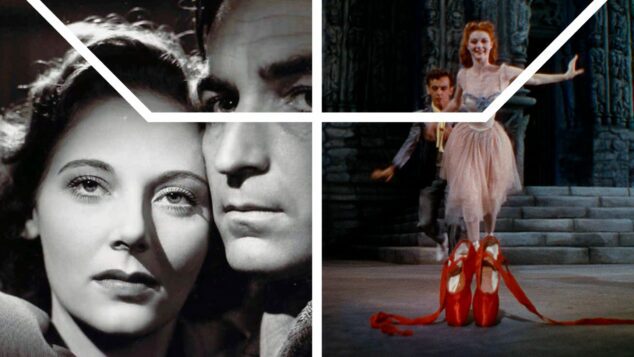
Whether on canvas or screen, the legacy of tenebrism is evident, and its influence will undoubtedly persist as artists and filmmakers keep conversing with light in their quest to captivate and move audiences around the world.
Frequently Asked Questions
What Is Tenebrism?
Tenebrism is an artistic style originating in the 17th century, characterized by extreme contrasts of light and shadow to create a dramatic effect and focus the viewer’s attention on certain areas of the artwork.
How Does Tenebrism Influence Contemporary Art?
Contemporary artists use tenebrism to convey deep emotions and create narratives, applying the technique’s powerful interplay of light and shadow to evoke a strong response from the viewer.
What Role Does Tenebrism Play In Filmmaking?
In filmmaking, tenebrism is used to establish mood and draw focus to specific elements within the frame, aiding in storytelling and the visual composition of scenes.
Is Tenebrism Simply A Replication Of 17th-century Art In Modern Times?
No, tenebrism today goes beyond replicating 17th-century art.
It’s part of an ongoing dialogue with light, shaping perceptions, and bringing forth emotions in visual storytelling across various mediums.


